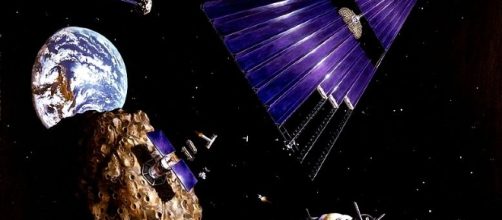NASA does many things to enable the exploration and, beyond, the economic exploitation of space, at its core technology development. However, a new initiative is funding a number of studies examining the economics of space-based enterprises with the goal of finding out whether they can be viable as businesses. One of the more interesting studies is being conducted by the Colorado School of Mines and concerns the impact of space-based solar power on mining asteroids and the moon, according to Discover Magazine.
What is space-based solar power?
Dr.
Peter Glaser first developed the idea of putting satellites in space to collect solar energy and beam them to Earth in the late 1960s. A space facility would collect solar energy in space and beam it down via microwaves to a receiving station on Earth which would then convert it to electricity and pump it into the grid. Unlike ground-based solar energy, a space-based solar satellite would generate clean, renewable power 24/7 in great abundance.
Why we haven’t gotten solar power satellites
The primary reason Solar Power Satellites do not exist now has been the cost of building them. So long as launch costs are prohibitively expensive, space-based solar power has not made much economic sense. However, with the advent of reusable rockets being developed by SpaceX and Blue Origin, the cost of building solar power satellites begins to go down.
The proposed SpaceX BFR launch vehicle, with its advertised ability to put 150 metric tons into low Earth orbit, would be ideal for such a project.
Also, lunar and asteroid mining combined with 3D printing and in space robotic manufacturing holds out the promise of building space-based solar power satellites using materials already found beyond the Earth. Most of the pieces of such a facility would not even have to be launched from the planet.
Facilitating lunar and asteroid mining
One interesting aspect of the study is not so much how lunar and asteroid mining can facilitate solar power satellites, but how the technology can enable extracting resources from celestial bodies. Mining operations by their nature tend to be energy intensive.
Access to the power of the sun, concentrated in a microwave beam, might be one way to jump-start mining in space.
Other markets for space-based solar energy
Besides the obvious civilian use of continuous, space-based solar energy, the military is interested in how the technology can enhance its operations. Currently, a remote base in a war zone has to be supplied with diesel fuel brought up a supply line that is prone to disruption by energy action. Solar power from space would be one way to circumvent an enemy keen to cut a base’s supplies.


